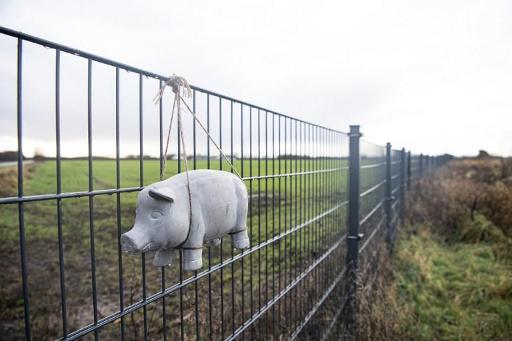Sniffer dogs, drones and electrified fences are being used in Germany in an all-out attempt to prevent boars from neighbouring countries transmitting swine fever to the country where the pig is king.
The German authorities are concerned about the rapid advance of this very contagious virus affecting pigs, but harmless to human beings. After some cases were discovered but quickly brought under control in Belgium last year, worries are turning to the east.
An outbreak in mid-November in western Poland had already given the industry a fright. But the discovery at the beginning of December of a boar carrying African swine fever (ASF) in Nowogrod Bobrzanski, forty kilometres from the border, alerted the German authorities.
"It is no longer a question of knowing whether ASF will reach Germany, but when! The virus can survive in mud on vehicle wheels for up to 100 days," Torsten Reinwald, the spokesman for the German Hunting Federation, stated when questioned by AFP.
Several German regions are now using various methods to keep track of the virus, and a special unit of six sniffer dogs set up to find dead and sick boars has been stationed in Sarre, which is close to France.
In Saxony, bordering on Poland, hunters, vets and emergency workers are being trained to take practical measures in the field. Using drones and infrared cameras, they simulate the infection outbreaks and how it could be handled.
Farther to the north, Mecklenburg-Western Pomerania has purchased a 50-kilometre long, mobile electric fence for €50,000, in the hope of limiting the intrusions of wild boar coming from Poland.
The contingency has become reality in Denmark: showing great foresight, the Scandinavian kingdom has just finished building a 70-kilometre fence on its border with Germany that is intended to stop any wild boar getting through.
Since 2014, the virus has been initially cropping up in countries to the East (Latvia, Lituania, Poland, Serbia, Ukraine, Moldavia, Slovakia, Rumania), decimating pig numbers there.
"The possibility of an infection coming from sick wild boars crossing the border is very high, more today as the result of human oversight," Sandra Blome, the director of the national swine fever laboratories at the Friedrich-Loeffler Institute, admitted.
The Brussels Times

